Electric vehicle battery technology is moving forward rapidly, but the fundamental principles of battery performance clash with the fundamental expectations of consumers: give me high energy density but charge quickly. Raising the rate of charging leads to higher temperatures across the battery cells. The effect of high temperatures means that battery performance will degrade over such cycles, which has been termed aging by industry.
Optimizing battery charge rates and coolant flow rates becomes an engineering imperative, but the charge controller and coolant controller must also prevent rapid aging. Fortunately, the ThermoAnalytics battery extension provides an accurate simulation of battery temperatures over time during both charge and utilization, enabling engineers to balance convenience with aging. In the consumer EV market, the fast charge wins the sale, but it’s avoiding aging that builds customer loyalty.
EV batteries and cooling systems account for over 25% of the vehicle mass, so optimizing performance yields significant weight savings and system-level efficiency. In this analysis, we outline state-of-the-art tools to analyze temperature profiles during rapid charging, and also design cooling systems that are effective yet lightweight.
Evaluating the Capabilities of TAITherm
The highest charge rate is the industry standard for new technology. The pack uses the modular design, where the batteries are encased in standardized modules that can be added or removed for different vehicle designs to make larger or smaller pack sizes. There are 11 modules, comprised of 264 cells in a 2p132s configuration. The cold plate is modeled with explicit geometry and fluid streams running through the channels to represent the flow of the coolant.
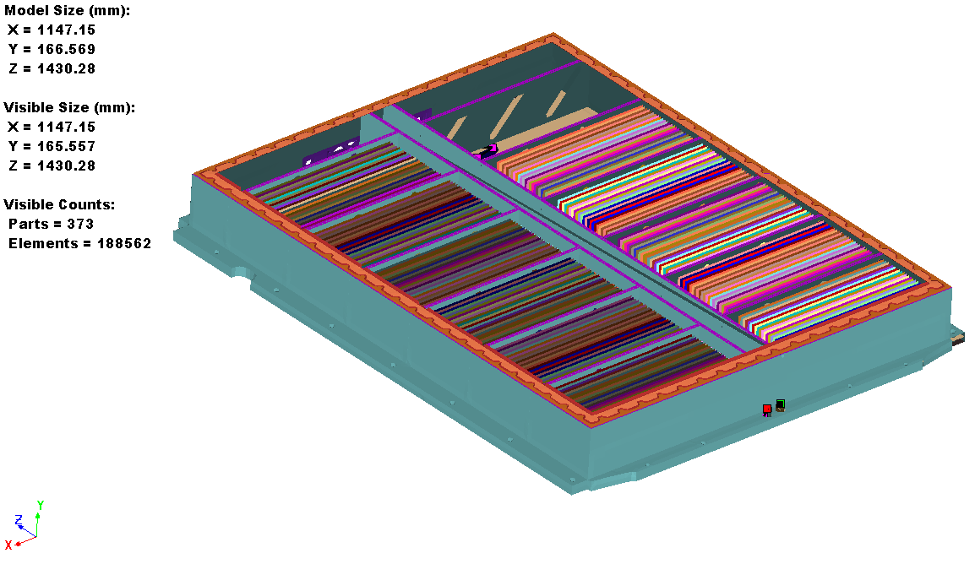
The fluid streams are set up to distribute coolant evenly through the channels, but the cold plate configuration wasn’t optimized for the pack yet. This model represents the starting point of the iterative design process, where simulation allows you to optimize plate geometry without expensive and time-consuming prototype and testing procedures. The inlet coolant temperature was set to a constant 10°C and the heat transfer coefficients in the channels are calculated using a library convection correlation that is built into TAITherm.
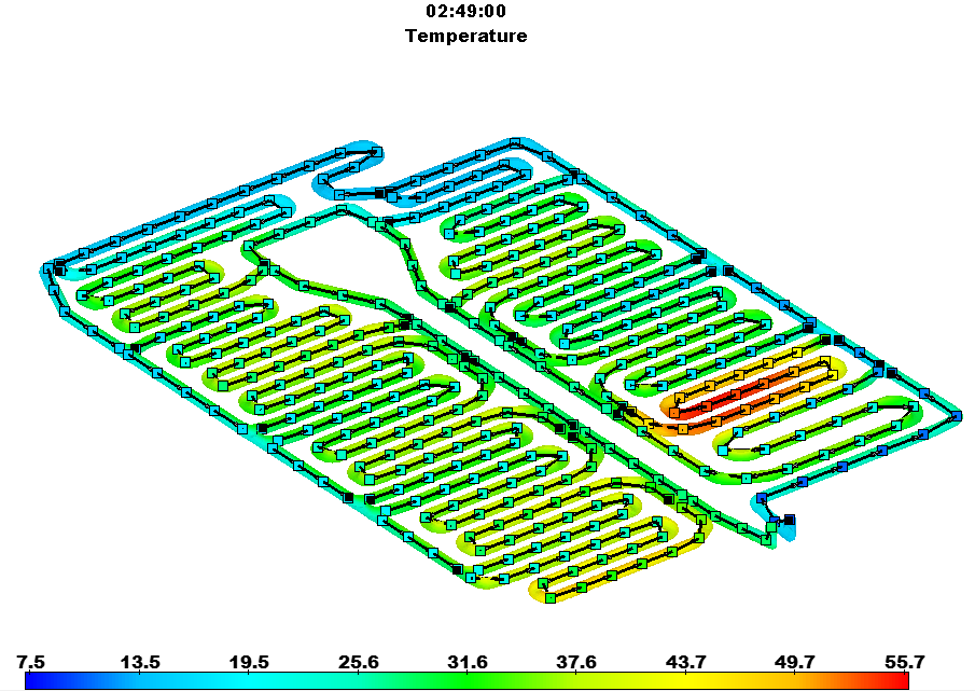
Three fast charging profiles were considered, as measured by a fast charger, and documented considering power input versus depth of discharge. TAITherm takes the power-DoD profiles as input and simultaneously computes the current and voltage to satisfy the charging correlation. The first profile starts at over 100 kW and steps down power as the battery is charging. The other two profiles have successively lower charge rates and have different power controls as the battery pack is charging. The highest charge rate results in about 40 minutes charge time, followed by 60 minutes and 120 minutes. The industry goal is to charge a battery pack from 20% state of charge to 80% state of charge in about 20 minutes, which is achieved using the highest charge rate shown here.
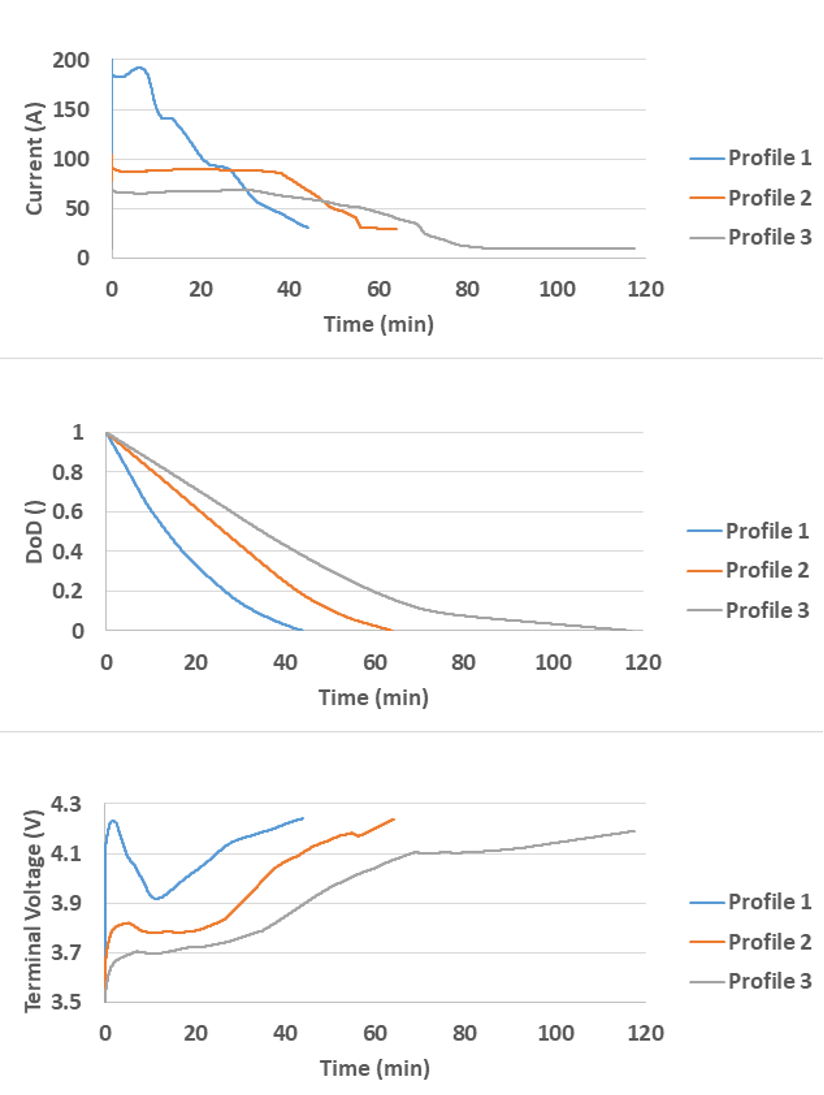
Evaluating Battery Pack Temperatures
In order to evaluate realistic battery pack temperatures, the US06 profile was repeated for 60 minutes, followed by a fast charge, and repeated twice. The batteries start at full charge and deplete to a 30 percent state of charge before fast charging. In order for the batteries to operate at a lower state of charge, the current would have to be de-rated to perform the US06 profile.
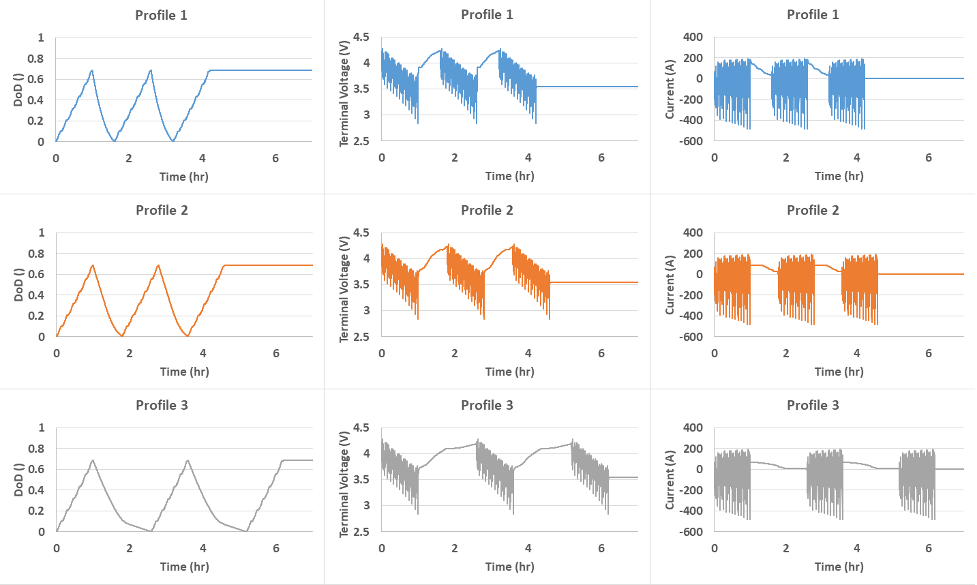
The temperatures of the cells reached as high as 73°C for the fastest case and 53°C for the slowest case. The same coolant flow rates were used for all cases and were not yet optimized for maximum performance. In order to maximize battery pack performance, lifetime, and safety, the coolant flow rate would have to be increased while fast charging.
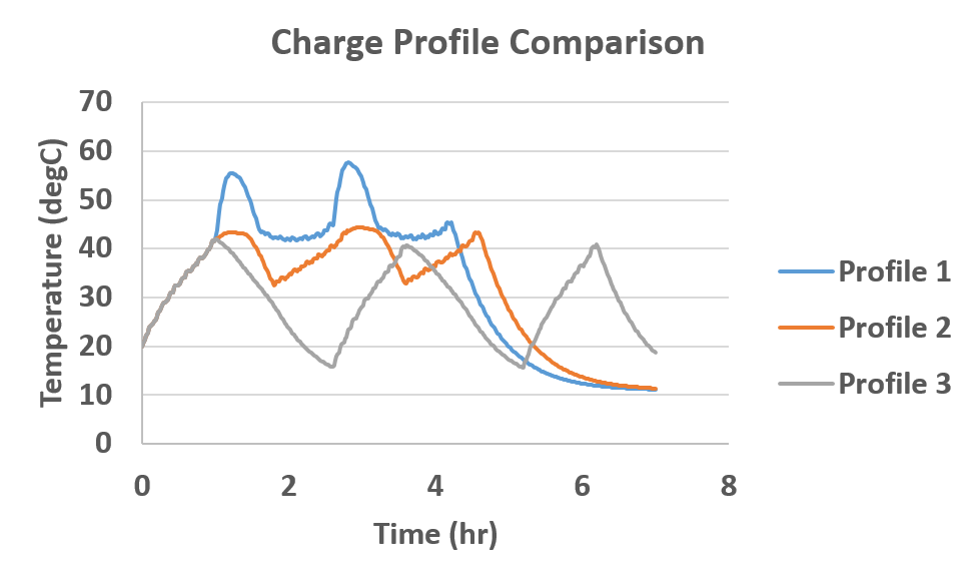
TAITherm’s Battery Extension
TAITherm’s battery extension calculates temperature-dependent heat rates which also take into consideration the current distribution in the pack when the internal resistance and voltage potential of each cell is varying based on temperature and depth of discharge. The main factors to consider when performing a thermal analysis are the maximum temperature, the temperature difference across the pack, and as well as within each cell. As can be seen, this pack requires some optimization of the cooling strategy and pack construction, such as heat spreaders and modified thermal conduction pathways. The animation shows the evolution of cell temperatures as the vehicle undergoes repeated driving and fast charging.
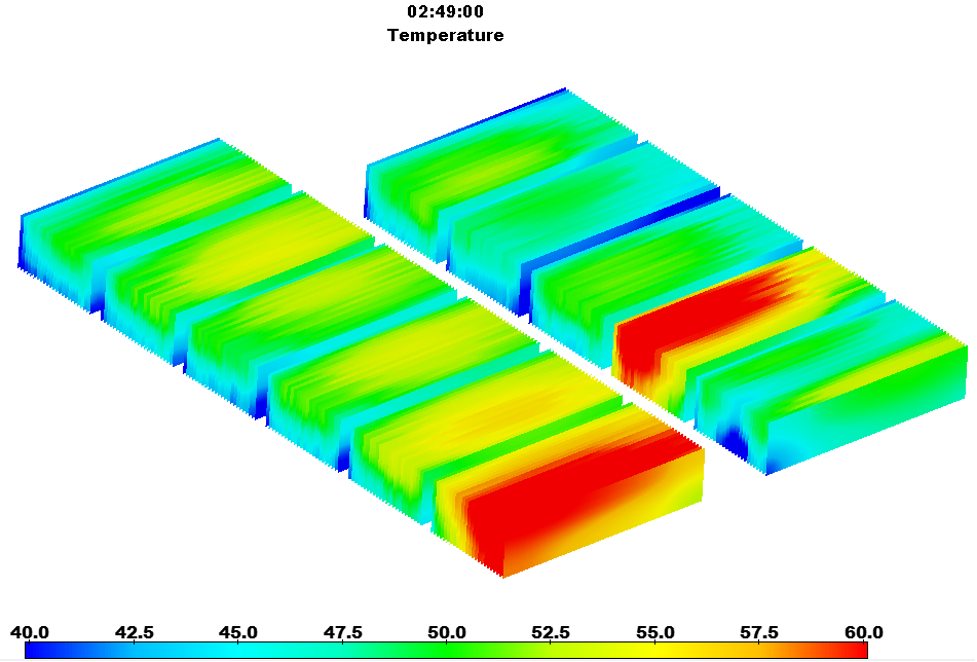
Once the thermal model and boundary conditions have been set up, the pack and cooling system should be optimized considering not only temperature gradients across and inside the cells but also battery aging characteristics and safety requirements. ThermoAnalytics provides empirical aging and thermal runaway tools to evaluate thermal behaviors and limits and can also couple with other software packages for advanced Multiphysics modeling to consider fast-charging degradation, electrochemical performance, and interaction with other electrical and thermal components in a full 1-D system-level model.
Comprehensive electrified vehicle simulation can be achieved using TAITherm and CoTherm for modeling system integration of battery management systems, HVAC systems, cabin comfort control, power electronics, electric motors, and advanced heating and cooling systems. Performance can be evaluated based on energy consumption and the total vehicle range that can be achieved. Three-dimensional temperature simulation with TAITherm augments system-level models with high-fidelity thermal and transient analysis to maximize the consumer experience and warranty expectations. If you are interested in learning more about how the electric vehicle simulation capabilities of TAITherm can help your team, please feel free to request a live demo of our software.
Visit our website at suppport.thermoanalytics.com for
- FAQs
- Webinars
- Tutorials
Get help from our technical support team:

Watch our Designing EV Battery Fast Charging and Thermal Management Systems using TAITherm webinar as we demonstrate how comprehensive electrified vehicle simulation can be achieved using TAITherm and CoTherm with system modeling tools to design better battery thermal management and charger management systems.

